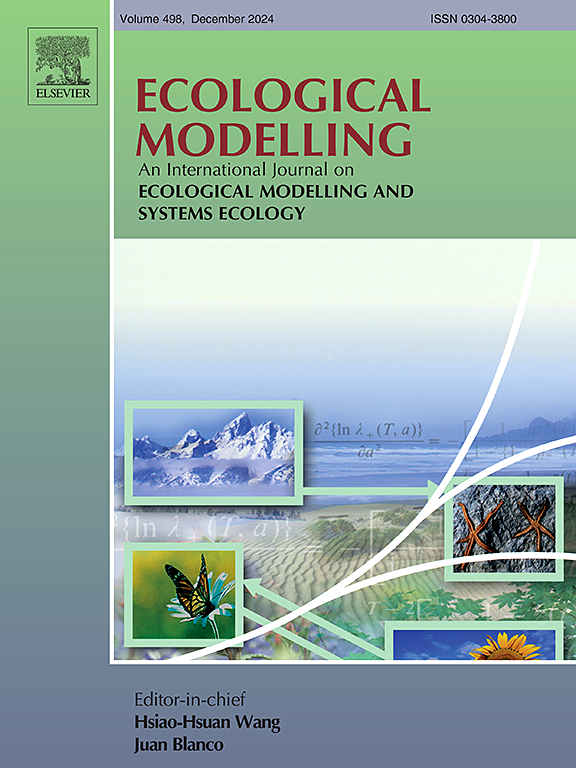Synergizing farmland reverting and energy substitution programs in Wolong through agent-based modelling and cost-efficiency analysis
IF 2.6
3区 环境科学与生态学
Q2 ECOLOGY
引用次数: 0
Abstract
Balancing human development with conservation necessitates ecological policies that optimize outcomes within limited budgets, highlighting the importance of cost-efficiency and local impact analysis. This study employs the Socio-Econ-Ecosystem Multipurpose Simulator (SEEMS), an Agent-Based Model (ABM) designed for simulating small-scale Coupled Human and Nature Systems (CHANS), to evaluate the cost-efficiency of two major ecology conservation programs: Grain-to-Green (G2G) and Firewood-to-Electricity (F2E). Focusing on China's Wolong National Reserve, a worldwide hot spot for flagship species conservation, the study evaluates the direct benefits of these programs, including reverted farmland area and firewood consumption, along with their combined indirect benefits on habitat quality, carbon emissions, and gross economic benefits. The findings are as follows: (1) The G2G program achieves optimal financial efficiency at approximately 500 CNY/Mu (∼1177.5 USD/ha), with diminishing returns observed beyond 1000 CNY/Mu (∼2355 USD/ha); (2) For the F2E program, the most fiscally cost-efficient option arises when the subsidized electricity price is at 0.4–0.5 CNY/kWh (∼0.063–0.079 USD/kWh), while further reductions of the prices to below 0.1 CNY/kWh (∼0.0157 USD/kWh) result in a diminishing cost-benefit ratio; (3) Comprehensive cost-efficiency analysis reveals no significant link between financial burden and carbon emissions, but a positive correlation with habitat quality and an inverted U-shaped relationship with total economic income; (4) Pareto analysis identifies 18 optimal dual-policy combinations for balancing carbon footprint, habitat quality, and gross economic benefits; (5) Posterior Pareto optimization further refines the selection of a specific policy scheme for a given realistic scenario. The analytical framework of this paper helps policymakers design economically viable and environmentally sustainable policies, addressing global conservation challenges.
求助全文
约1分钟内获得全文
求助全文
来源期刊

Ecological Modelling
环境科学-生态学
CiteScore
5.60
自引率
6.50%
发文量
259
审稿时长
69 days
期刊介绍:
The journal is concerned with the use of mathematical models and systems analysis for the description of ecological processes and for the sustainable management of resources. Human activity and well-being are dependent on and integrated with the functioning of ecosystems and the services they provide. We aim to understand these basic ecosystem functions using mathematical and conceptual modelling, systems analysis, thermodynamics, computer simulations, and ecological theory. This leads to a preference for process-based models embedded in theory with explicit causative agents as opposed to strictly statistical or correlative descriptions. These modelling methods can be applied to a wide spectrum of issues ranging from basic ecology to human ecology to socio-ecological systems. The journal welcomes research articles, short communications, review articles, letters to the editor, book reviews, and other communications. The journal also supports the activities of the [International Society of Ecological Modelling (ISEM)](http://www.isemna.org/).
 求助内容:
求助内容: 应助结果提醒方式:
应助结果提醒方式:


